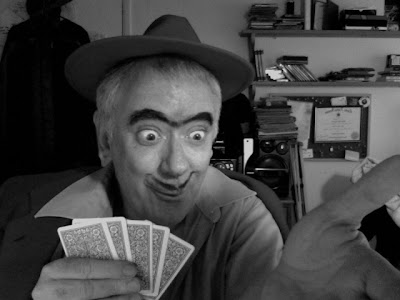
I changed my mind! The San Diego Con has one more day to go (today) and I figure I can afford to indulge myself with just one more purely personal post, on a possibly unpopular subject. That subject is: "How many kids should I have, and when should I have them?"
My answer is: the ideal number of kids is three, the ideal time to start having them is twenty-three for the woman, and the ideal spacing between kids is four years.
My wife and I started when she was thirty-four and we figured we'd have just one kid, who would be a super kid that would have all the advantages that you could have from having the income and undivided attention of two parents directed at them. I thought the kid's early years would be the difficult ones where he cried all the time and was a real bother, then later he would evolve into a real human being and a pal and best friend. Boy, was I wrong.

The early years were unexpectedly great. I mean really, really great! I used to hate kids but you never feel that way about your own. Things I used to see in the street that bothered me about kids just never came up. And the crying? After the first six months the crying dropped off to a trickle. Anyway, it was so good that after five years we had another kid, also a ton of fun. My only regret is that we didn't have a third.
The reason for spacing the kids four years apart is so one is clearly older than the other and they're less likely to think of each other as rivals. The age difference means that the older kid is more inclined to protect the younger kid than bully him. The kids are more likely to grow up liking each other.

The reason for starting at age 23 (the girl's age) is that it gives the mother time to finish college and have some life experiences. If she has three kids, once every four years, that's twelve years. meaning she has her last baby at age thirty five, and the last one is almost as likely to be healthy as the first. As you know, after 35 that changes.
Another thing to consider is that all kids will snub their parents when they reach age 13 or so. After that they go directly to their room when they come home from school and they only want to hang out with their friends. That's catastrophic if you've become addicted to the kid's cuteness and affection for the previous twelve years, but what can you do? It's nature's way! Nothing much, except.....
...Except if you decide to start at woman's age twenty-three and have FOUR kids! Do that and you'll have a new baby just at the time your oldest kid is beginning to snub you! That's years and years of wall-to-wall cuteness, enough sugar for anyone! After that, get a dog!


This post will disgust readers who hate kids. I know how they feel. I used to hate the little rugrats myself. The thing is, you're hard-wired to have them. The day will come when you hesitantly test the water and then you'll be hooked. The first time you come home from a really hard day at work and your kid spontaneously runs into your arms, just delighted to see you...you'll be a changed man. All that adulation and cuteness and kid happiness is more addictive than heroin. You'll become an addict like so many people before you.
Many, many thanks to Fatbear who found an embarrassing math mistake in the previous incarnation of this post!















































